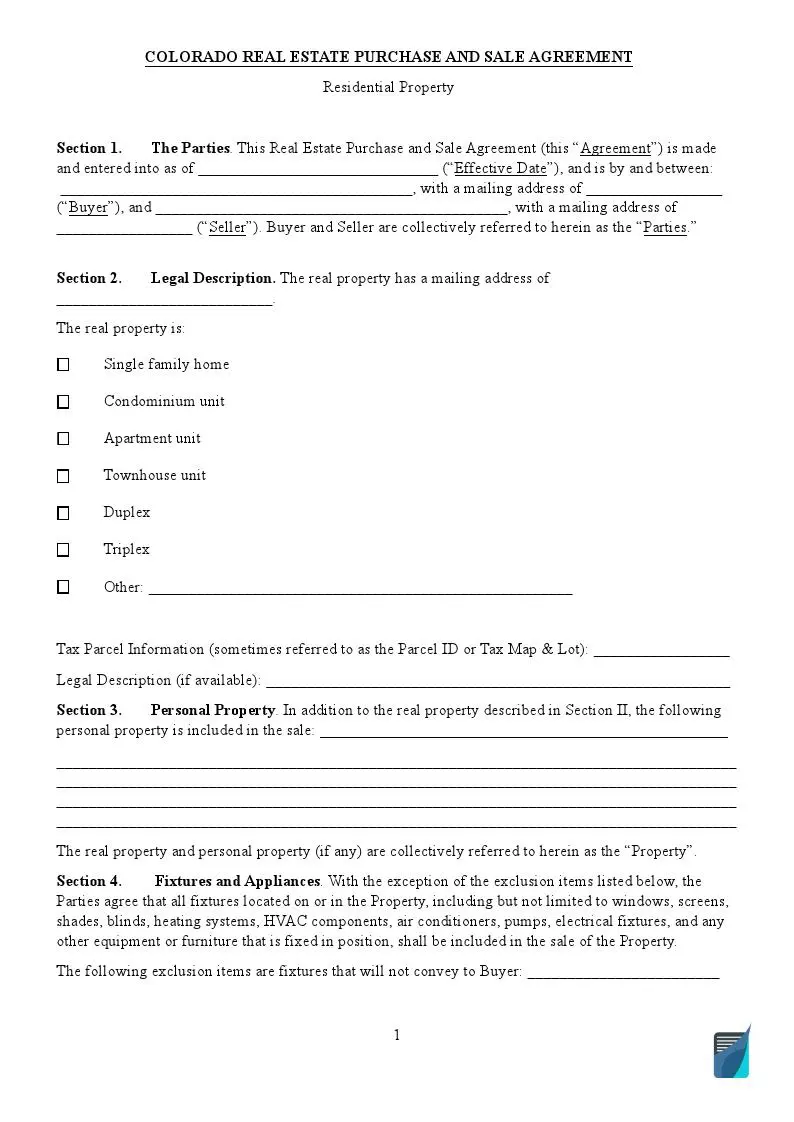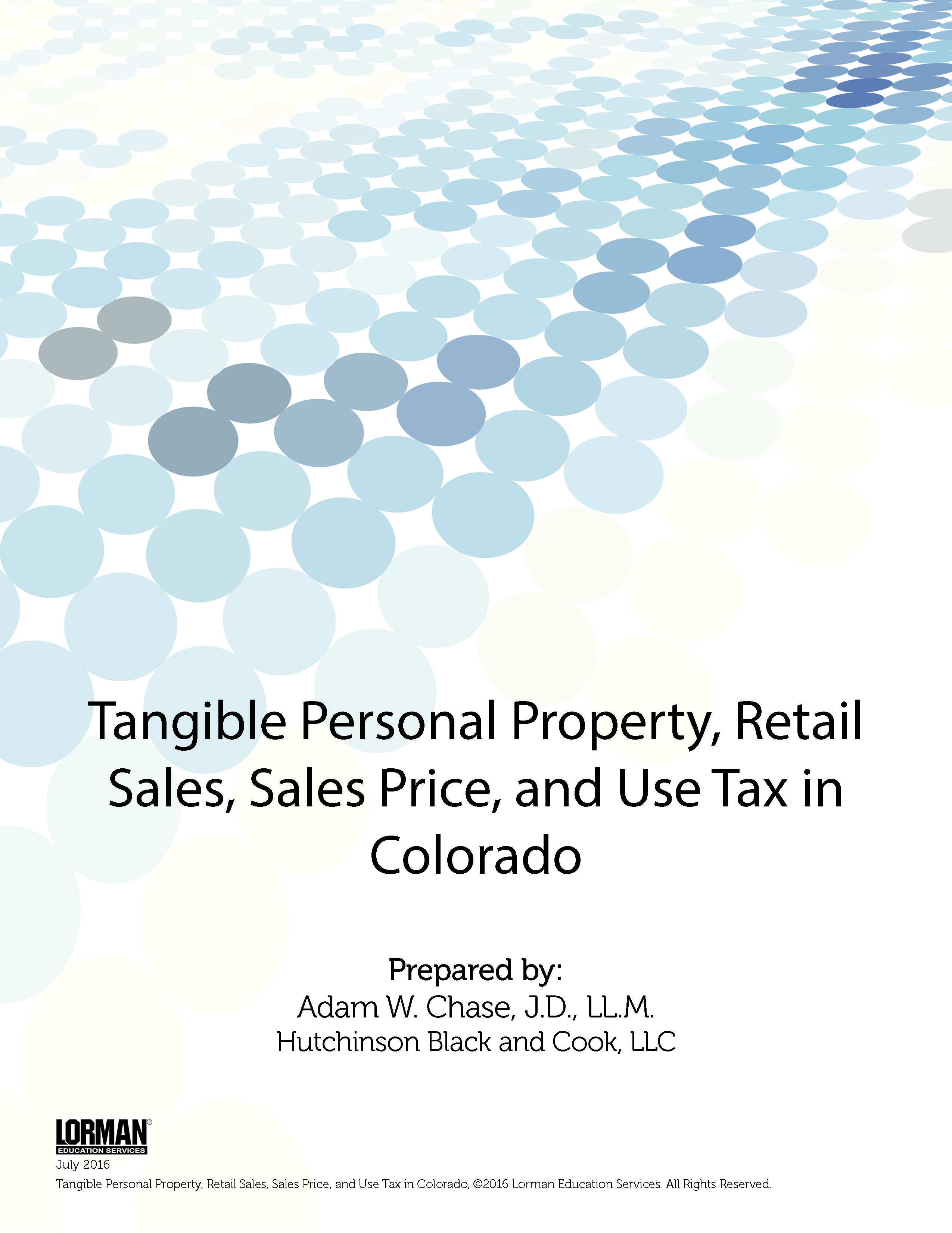Colorado Personal Property Tax - Property taxes are one of the most important sources of revenue for state and local governments, accounting for approximately 31.5 percent of U.S. and local tax revenues as of fiscal year 2016. [1] The majority of property tax revenue flows to local governments, and local residents accounted for approximately 72 percent of local tax revenue in fiscal year 2016, relying on property taxes to fund public services such as public education. [2]
Property taxes are an important element of state and local tax laws because property taxes influence business investment decisions and people's decisions about where to live. While most people are familiar with occupancy taxes on land and buildings, also known as property taxes, many states also tax tangible personal property (TPP) owned by individuals and businesses.
Colorado Personal Property Tax

Tangible personal property (TPP) includes property that can be moved or touched and typically includes items such as business equipment, furniture, and automobiles. This is distinct from intangible personal property, which includes stocks, bonds, and intellectual property such as copyrights and patents.
A Guide To Business Personal Property Tax In Colorado
TPP taxes make up a small portion of state and local tax revenues, but they create high compliance costs, distort investment decisions, and are an antiquated form of taxation. This article examines the history and administration of personal property taxation and examines how states have changed their taxation since the TPP over the past 10 years. It will advise policymakers on how to ease TPP tax burdens while ensuring that they provide local governments with much-needed revenue. This would give state and local governments long-term leverage to remove TPP taxes from their tax codes.
In the United States, personal property taxes arose at the same time as real estate taxes. Estate taxes taxed more wealth than current property taxes because personal property taxes were reduced. [3]
Century tried to limit property taxes to real estate and certain personal property such as appliances and machinery. [4] Personal property for personal use was gradually excluded from the tax base in the 20th century
Internationally, countries have opted out of wealth taxes: Of the 36 countries in the Organization for Economic Co-operation and Development (OECD), only seven countries levy taxes on personal property: Austria, France, Germany, the Netherlands, Japan, the United Kingdom and the United States. [5]
Computer Information Concepts
Over time, the U.S. personal property tax base has declined as states have been exempted from various forms of the TPP. For example, agriculture, manufacturing and renewable energy companies are often exempt from TPP taxes. Many states are exempt from economic development if they meet certain requirements, such as the number of new jobs created or a certain amount of investment.
For example, Maryland allows local governments to provide loans to expand manufacturing facilities. [6] Likewise, it allows Idaho counties to be exempt from the TPP for up to five years if they invest at least $500,000 in new manufacturing facilities. [7]
Seven states (Delaware, Hawaii, Illinois, Iowa, New York, Ohio, and Pennsylvania) exempt all TPPs from taxation, while five other states (Minnesota, New Hampshire, New Jersey, North Dakota, and South Dakota) exempt most TPPs. tax free. except for centrally rated industries such as public utilities or oil and natural gas refineries.

Taxes from the TPP are primarily collected by local governments, but they are regulated at the state level. There is a big difference in TPP taxation. Property classifications, assessment rates, and exemptions are often determined by the state, with localities choosing to tax TPP within limits set by the state government. 23 states allow municipalities to deduct taxes from TPPs, while 27 states do not (see Appendix Table 2).
Property Tax In Colorado Post Gallagher: What Can Be Understood From Other States?
The process of calculating and filing TPP tax is complex and varies from state to state. Businesses must first determine what taxes they are entitled to, which varies among states, counties, and municipalities. States typically exempt personal property from TPP taxes, focusing on real property.
Some states tax automobiles, boats, and durable assets for personal use because these assets have liquid secondary markets and avoid many of the administrative hassles of valuing other personal property. For properties that are exempt or non-exempt from the TPP tax base, the TPP tax liability is calculated by first determining the assessed value of the property and multiplying it by the rate ratio for the appropriate property class. An assessment ratio reduces the value of taxable property, which reduces the taxpayer's tax liability.
Assessment rates may be higher for a TPP than for a permanent residence. Fifteen states impose different assessment rates for TPPs than for real estate. This means that TPP has a separate assessment ratio to determine the property value subject to property tax. States may also charge different assessment rates for specific TPP types. For example, South Carolina uses a 5 percent tariff on agricultural machinery and equipment, compared to 10.5 percent for most other TPPs.
Take, for example, a rubber factory in New Mexico. The company must first determine whether it has a taxable TPP. New Mexico taxes are withheld by a business that must pay federal taxes for the previous tax year. Therefore, the company's rubber manufacturing equipment is taxable unless it is used for an exempt purpose. A company such as a tenant of an urban development project can still be exempted from purchasing TPP for up to seven years. [9]
Property Tax Comparison By State For Cross State Businesses
Once the company has identified its taxable property, it must appraise the property. New Mexico evaluates property by examining the cost of purchasing the property, the cost of the property sold, and the present value of the income earned on the property. [10] The cost method is often used for plant and equipment. [11]
The asset is then depreciated on a straight-line basis using state-mandated depreciation schedules. [12] The straight-line method of depreciation is calculated by dividing the cost of the asset by the number of years it is expected to be used and deducting this amount from the cost of the asset each year. [13] This value is multiplied by the state's uniform assessment rate, which is set at 33.3 percent for all property, to arrive at the property's taxable value. [14]
The taxable value is multiplied by the applicable tax rate mill. States can either apply the same tax rate to real and tangible personal property or charge different tax rates to different types of property. Paying different tax rates from the TPP is a way for local governments to collect additional revenue from commercial property and support certain taxpayers. [15]

After the TPP is taxed, taxpayers can reduce their liability through tax credits and credits. TPP tax credits are often used to stimulate economic growth. For example, in Maryland, localities can provide tax credits for new or expanding manufacturing facilities under certain conditions. [16] Another way states and municipalities reduce TPP tax burdens is by reducing tax liability after assessment, but before payment. Nevada, for example, uses abatements for businesses operating in economic development zones. [17]
Ranking Property Taxes By State
As with estate plans, state governments have imposed limits on personal property tax increases. Property taxes can be limited in three ways: assessment limits, levy limits, and rate limits. [18]
The valuation increases the capitalization of the TPP tax produced through the increase in value. [19] While real estate often increases in value, personal property depreciates over time. [20] Appraisal limits are therefore less applicable to movable property, as property does not require a limit on appreciation.
Personal property tax schemes may be subject to rates that limit the ability of state and local governments to raise tax rates above an absolute ceiling or fixed growth rate. It limits revenue from personal property taxes by deliberately raising tax rates. Price caps are more common for TPPs and are often set by law at the state level.
Tax levies impose limits on the total amount of revenue collected from property taxes. Tax credits can be applied to real estate and personal property. In Washington, the state constitution limits real and personal property taxes to 1 percent of gross property value unless voters approve a higher percentage. [21]
Colorado Gov. Jared Polis Signs New Property Tax Law, Gasoline Fee Delay
Real estate taxes follow the principle of preference and are economically efficient when real estate is acquired. [22] Property taxes fund state and local government services and are a relatively transparent form of taxation. The property tax base includes land that generates economic rent and is an efficient source of tax revenue.
Owners cannot move their land and avoid tax liability and pay the full amount of land tax. Real estate taxes are also levied on buildings and other improvements on land, which affect the external decision to improve and build on the property; evidence suggests that property taxes are an important factor in determining employment. [23]
Seemingly personal
Delinquent personal property tax, business personal property tax, personal property tax calculator, personal property tax software, colorado business personal property tax, personal property tax colorado, personal property tax lookup, pay personal property tax, tax on personal property, does colorado have personal property tax, maryland personal property tax, texas personal property tax
0 Comments